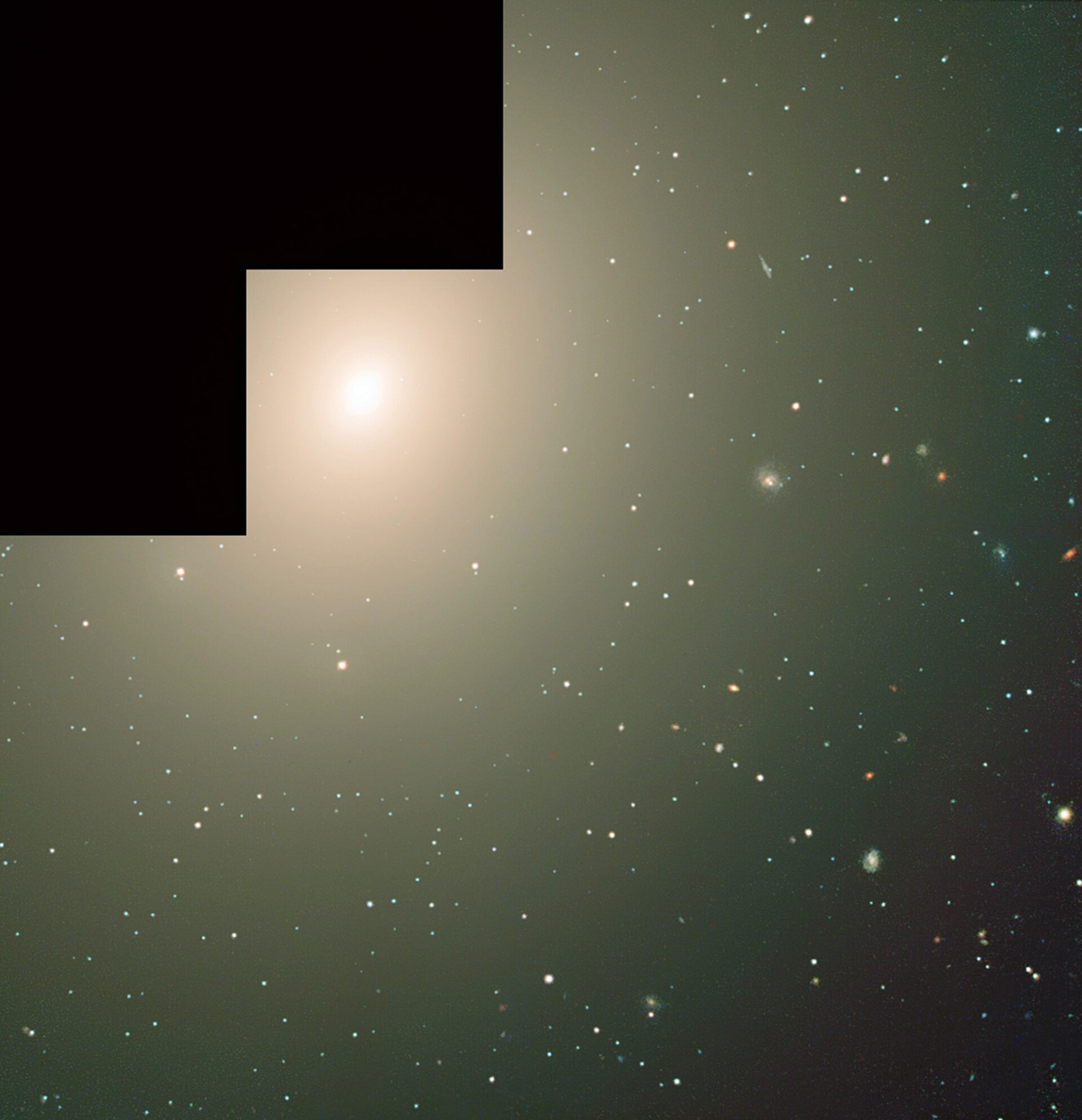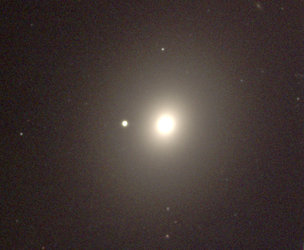

Elliptical galaxy NGC 4365 with numerous young star clusters
This colour image shows the elliptical galaxy NGC 4365. The image is a combination of two exposures taken with the NASA/ESA Hubble Space Telescope (Wide Field Planetary Camera 2) on 31 May 1996 and one taken with ESO’s Very Large Telescope (multi-mode ISAAC instrument on the 8.2-m VLT ANTU telescope at the ESO Paranal Observatory, Chile).
By combining these images a group of European and American astronomers have made a major discovery. They have identified a huge number of 'young' stellar clusters, in an old elliptical
galaxy. For the first time, it has been possible to identify several distinct periods of star formation in a galaxy as old as this one. Elliptical galaxies have always been considered to have undergone one initial star-forming period and thereafter to be devoid of star formation.
NGC 4365 is located in the constellation of Pegasus at an approximate distance of 55 million light-years. The images were taken through a green filter (V-band, 2200 seconds, coloured blue), a red filter (I-Band, 2300 seconds, coloured green) and an infrared filter (K-band, 9500 seconds, 0.6 arcseconds seeing, coloured red).





